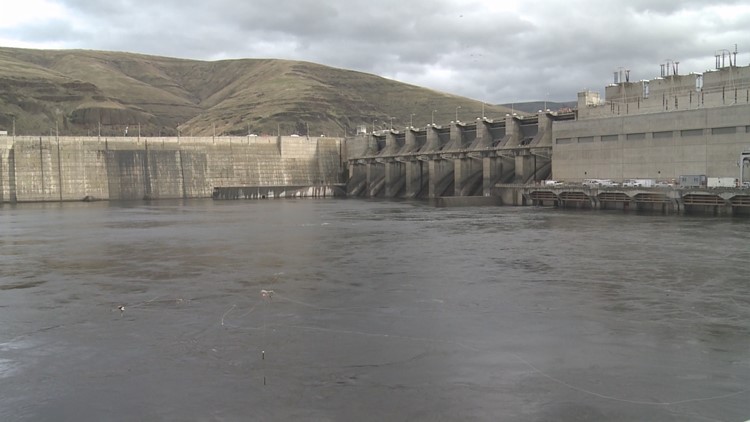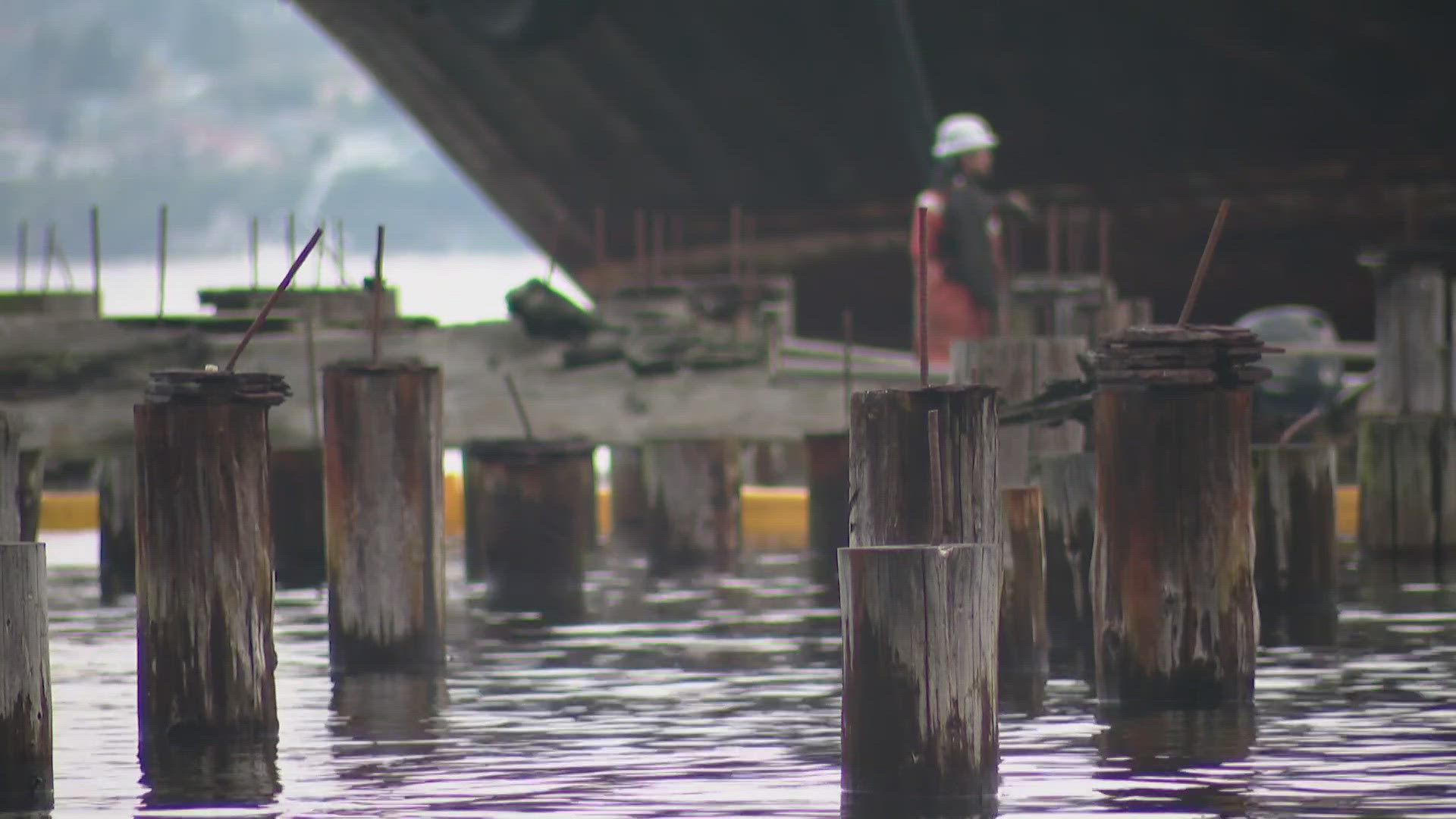LEWISTON, Idaho – Scientists and power providers are scrutinizing the Snake River dams to see just how damaging they are for wild fish, in accordance with a federal judge’s orders. For the first time in about a decade, the public has a chance to weigh in on the future of the dams.
It’s an issue that’s captivated the attention of former Idaho Fish and Game biologist, Steve Pettit. He spent years fishing the Clearwater River on his lunch breaks, so if anyone’s watched the waters change over 40 years, Petit says he has.
“It’s pathetic. Can’t buy a fish,” he said.
Pettit blames a bad memory that’s stuck like a persistent nightmare. He was there in 1975 when the Lower Granite dam held back the Snake River for the first time.
“I had tears running down my face most of the day,” he said.
Pettit spent the next 25 years as Idaho’s Fish Passage Specialist, working to improve fish survival through the dams. Never again, though, would he see the runs he remembers on his lunch breaks.
“Anybody with a basic knowledge of what fish require to complete their life history saw it as the beginning of the end,” Pettit.
The Snake River is the largest tributary to the Columbia. Its four dams generate about 5 percent of the Pacific Northwest’s power.
The dams also turned Lewiston, Idaho into an inland seaport town. By slowing down water flow, the dams sped up the opportunity to ship goods. Hydropower also sped up the decline of salmon and steelhead by inhibiting migration. Juveniles are more susceptible to predators due to the slack water which also heats up faster than a quick-moving river.
Today, all of the Snake River salmonids are listed under the Endangered Species Act.
Environmentalists started suing over the dams in the 1990s. Each time, a judge ordered a re-examination of the system to better protect fish.
Last year, U.S. District Court Judge Michael H. Simon ordered federal agencies to prepare a new plan by early 2018.
“Our fish runs are circling the bowl towards extinction,” Pettit said.
The first judge to hear the case said the dam system “cries out for a major overhaul.” That began costly fish habitat restoration efforts along the entire river system
The dams made major fish passage improvements, like a juvenile bypass system. Juvenile fish survival rates past all four dams climbed from about a quarter to a half. Despite it all, the most recent court ruling says: “These efforts have already cost billions of dollars, yet they are failing.”
The rate of adult salmonids returning still hovers between 1 percent and 3 percent. To recover the fish, biologists for the plaintiffs say that return rate must double or even triple to somewhere between 4 percent and 6 percent.
“I think we have an opportunity to turn the corner and go in a different direction that would actually bring the salmon back. The centerpiece, of course, is looking at taking out the Snake River dams,” explained attorney Todd True.
True took over as an attorney on the case in the late 90s. He heard the stories of the land’s native people, life before fish hatcheries.
“There used to be stories about the number of salmon. They used to talk about seeing the salmon, seeing the backs of salmon from bank to bank on some of these streams, almost like you could walk across them,” said Elliott Moffitt, a Nez Perce tribe member.
Just feet from a river that once teemed with salmon, the majority of fish are now spawned in trays. The tribe calls the hatchery chinook a Band-Aid they’d rather rip off.
“And our culture is at stake because if we don’t do something now, there might not be anything left for future generations,” he said.
But the Nez Perce aren’t the only ones worried about future generations.
“We’re always a little nervous because we’re very outnumbered,” said Marci Green, vice president of the Washington Association of Wheat Growers.
Wheat is the main commodity transported across the Snake River dams. Farmers worry that without the barge system railroads would hold a monopoly and transport costs would spike.
“And the harm it would do to our industry is huge,” she said. “Right now the price of wheat is low. Every little bit matters a lot.”
Bonneville Power says the dams provide an important source of clean energy, and “critical support in the form of operating reserves or helping to meet unexpected changes in Northwest power generation or demand.” They claim renewable energy sources aren’t available in the reliable amount necessary for areas like the Tri-Cities.
“I think taking out these dams is a Draconian solution,” said Northwest River Partners Executive Director Terri Flores.
Flores and others are skeptical that breaching the dams would save wild fish. Many juvenile fish are loaded with toxins before ever reaching the dams.
“I just truly believe that taking out the dams would not necessarily solve the problem that these very passionate people want to solve, as do we,” Flores said.
Orcas have brought perhaps the loudest rally cry to remove the dams.
Conservationists claim the endangered Southern Residents just need more Columbia River chinook to survive. Even among scientists, though, there is debate over whether the fish would be enough.
“The fish move around and the whales move around, and trying to match that intersection in time and space relative to nutritional needs of the whales is hard to do,” said NOAA biologist Brad Hanson.
The court ruling forces the agencies to “consider all reasonable alternatives”, including breaching one or all of the dams. The judge also said that the dams aggravate conditions that will only worsen for the fish: “warmer stream temperatures”, “warmer ocean temperatures, and “large-scale ecological changes.”
Bonneville Power claims the area’s simply not ready for the dams to come down, saying that wind and solar can’t yet replace the reliability of the hydropower system. Critics don’t buy it and argue the power providers just haven’t tried hard enough to diversify the grid.
“And that doesn’t even look at the fact that the whole Snake transportation system is massively subsidized by tax-payers. It is a money-loser,” True said.
True points to the Elwha River, where dam removal has successfully boosted fish runs.
Once you wire in climate change impact to the already existing hydro system impact, our fish no longer have a chance. They will not recover. They will stay on the Endangered Species Act until they disappear,” Pettit said.
For Pettit, this moment is just as historic as that day in 1975.
The day he saw the Lower Granite dam work on its first day, and now hopes to see the dam on its last.
"The people of the Northwest are going to have to step up to the plate and make a decision," he said. "Are these fish worth saving, because if they are, removing those Snake River dams, I believe very strongly, is their last hope for recovery."



